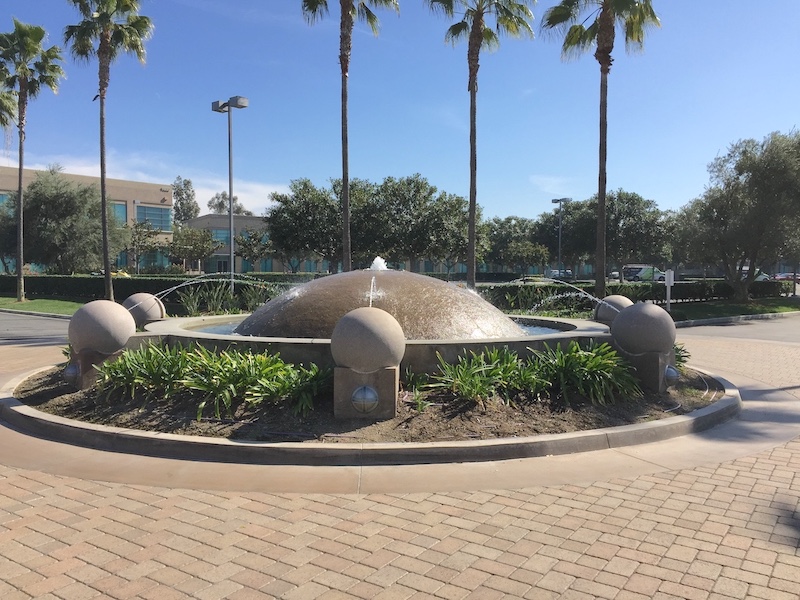Playground Astronomy
Playground structures and public sculptures as astronomical instruments
Besides the large infrastructure of a modern civilization — buildings, roads, dams — there are also a lot of smaller bits and pieces of permanent installation that help to protect us, guide us, and decorate our civilization — things like protective barriers, and decorative fountains and public sculptures. (I’m tempted to call these things “micro-infrastructure,” but that might be mixing too many Latin prefixes.) All of these things are built by people, according to certain designs. I claim that many of these installations could be more beautiful and more informative if we had a science education that did a better job of relating us to the earth below us and the sky above us.
No Sense of Direction
Here’s an example of what I mean. Consider this lovely water fountain in Lake Forest, California:
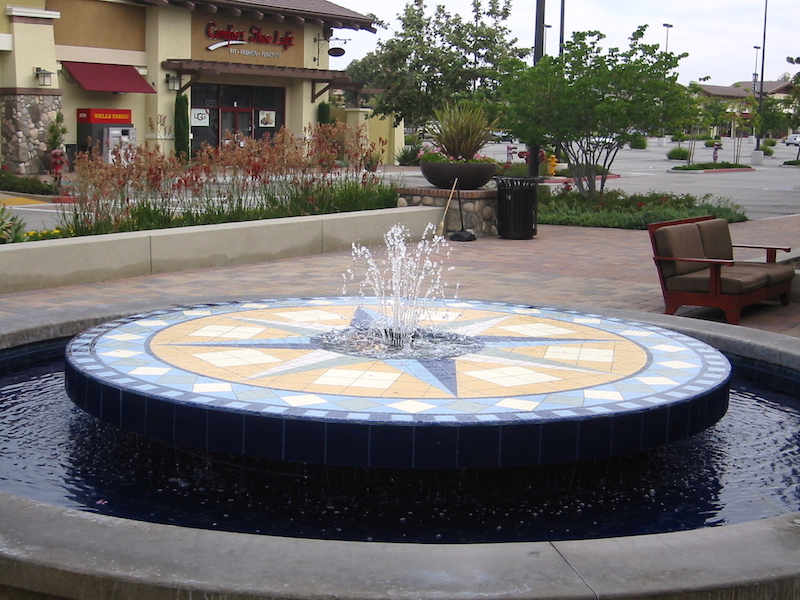
Whoever built it went to a lot of trouble to make the platform and the surrounding wall perfectly circular, and to make the platform flat and level, so that the water runs off evenly in all directions. (It is hard to tell from the photograph, but the water slides outwards to the edges and runs down the sides, forming a pretty curtain of drips around the perimeter of the platform.) The builder even laid out the tiles in a nice compass rose pattern…but he aligned the pointers at right angles with the buildings, instead of with north. (I took the picture facing due north.) How much harder would it have been to align the arms of the rose properly with north? For a few dollars more, he could have placed four specially engraved tiles labeled “N”, “S”, “E”, and “W” at the tips of each arm. If you are going to go to the trouble of building a lovely fountain like this, why not go just a little further and show passers-by a large, beautiful, accurate compass rose? Why not give passers-by the chance to see with precision which way is which, and to feel that much more connected to the world they live in? The water jets shooting in all directions and the water sliding and dripping off the platform in all directions would have been a nice complement to the directional theme. The fountain would have been a compass and a work of art.
An Undiscovered World
Here's another example of my thesis. This is one of several decorative and protective concrete spheres lining a certain plaza in Laguna Niguel, California, at around 10 O’Clock in the morning.
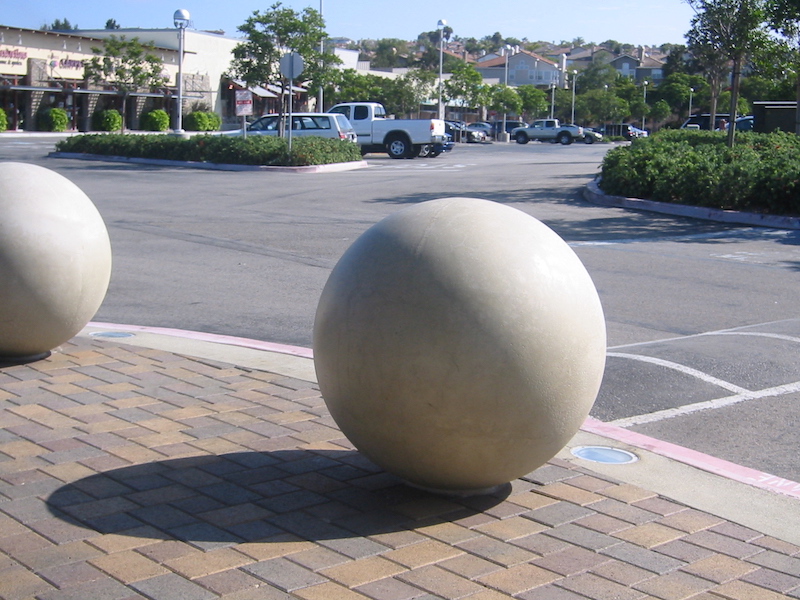
These things are made by pouring concrete into a pair of hemispherical molds clamped together. How much harder would it be to use a couple of hemispherical stencils to paint or etch a globe onto the surface, or perhaps use a mold with the impression of the continents in the inner surface? You could have a concrete globe instead of a plain concrete sphere. Furthermore, if you were to orient the globe with your own location (in this case Southern California) at the top, and with the North Pole of the globe pointing at the North Star in the sky, then the globe would be oriented in space in exactly the same way as the real Earth underneath it. If the people who made the concrete bollard in Laguna Niguel had done this, my photograph might have looked something like this:

With the globe turned like this, every country on its surface would face into space in the same direction as the real country on the real world underneath it. You could also get a rough feel for how far around the world and in which direction any other country lies. The direction and the amount of arc from the top of the globe to any other location on the globe would tell you the direction and the arc around the world from your location to the corresponding destination on Earth. To express the relationship another way, if I had backed up after taking my picture, in a straight line for 20,000 miles or so, I would have seen Australia and the Pacific Ocean.
Not only would the concrete globe be able to show you spatial relationships in this way, but the sunshine would fall onto the globe in exactly the same way that it falls onto the Earth beneath it. You would be able to tell just by looking at the globe which parts of the planet were in sunshine and where in the world it was nighttime at that exact moment. The concrete globe would be a world-wide spherical sundial. The picture above was taken in mid-morning (in California), at which time the sun had just risen on Hawaii, was about to rise on New Zealand, and was setting in Europe and Africa. Any observer would have been able to tell this from the pattern of sunshine and shadow on the globe.
I don’t mean to imply that every concrete curb stop should be turned into an astronomical instrument. But why can’t we have more of these things around us? The “globe sundial” is not an original idea of mine. People have actually made them, but they are depressingly rare. I know of only two — one at an elementary school in Sebastopol, California, and one in the “Children's Garden” at The Huntington Library, Art Museum, and Botanical Gardens in California.
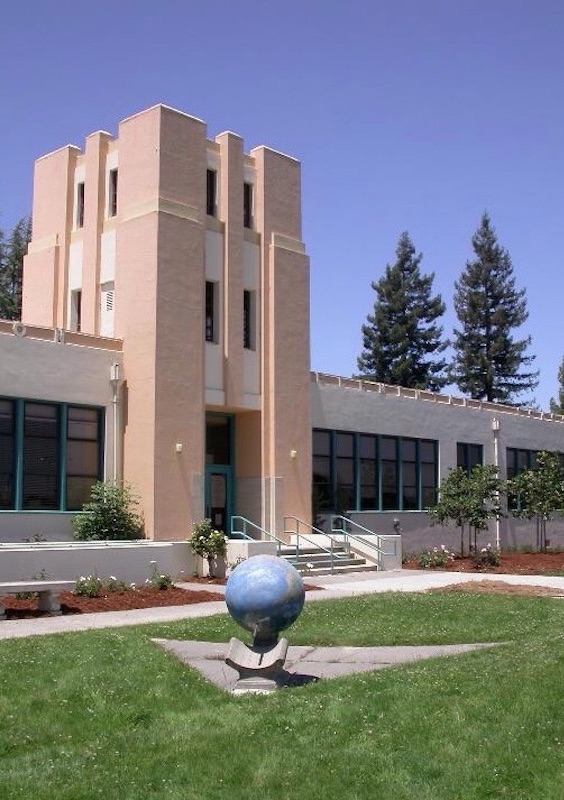
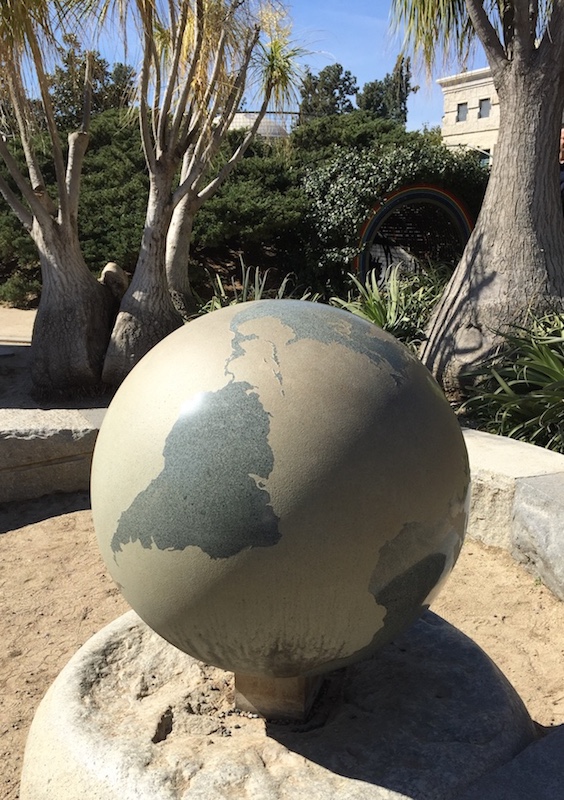
Sadly, I once visited the one at the Huntington and discovered that, even here, at the otherwise wonderful Huntington, nobody knows what this globe really is. Before I remembered that it was located in the “Children's Garden,” I asked three or four Huntington employees where the “globe sundial” was, and nobody knew what I was talking about. When I finally found it, there was no sign nearby to mark its importance, or to explain what it stands for or what you can tell by looking at it. Parents and children might stare at it for a few seconds, or maybe try to climb on it, but nobody says anything about sunshine, the Earth, or the time of day. And don't go too early in the morning or too late in the afternoon, because it will be in the shade. It is positioned with large trees to the east and west.
An Unappreciated Craftsman
Sometimes someone does go to the trouble of making a beautiful, scientifically literate public display, and places it in full view of the everyday public, and even provides instructions, but the public fails to understand or appreciate it. Once I was attending an outdoor “Festival of Lights” in the city of Riverside, California, when to my delight I (almost literally) stumbled across this fantastic sundial near the Riverside Public Library:
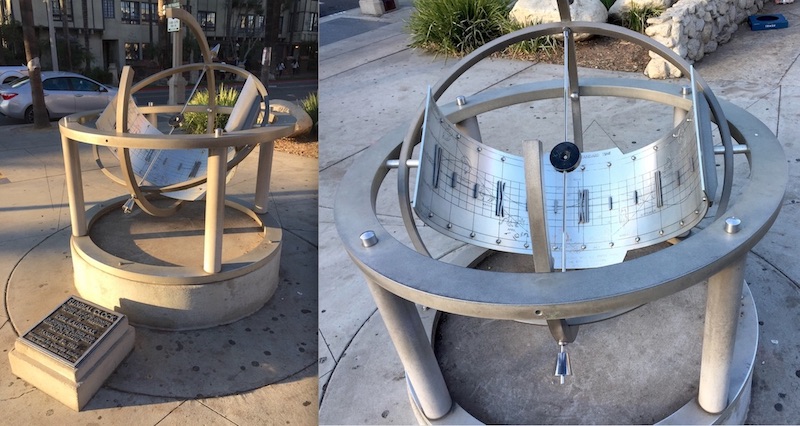
The central gnomon is designed as an arrow, pointing at the North Star (or more precisely the North Celestial Pole), and there is a pinhole nodus in the middle allowing you to read the precise time in any season. The cylindrical plate is beautifully crafted (with a 1960s style) with markings enabling one to determine, not just solar time, but actual clock time to within a few minutes. There's even an accurately-oriented compass rose traced out by seams in the concrete foundation underneath. But I have to wonder if I was the only passer-by who appreciated this beautifully-made piece of scientific sculpture. Granted, it was evening during a Christmas festival, but most of the people I observed passed it by without a glance. If they did stop, they might have patted it to see how sturdy it was, or looked quizzically at it for a few moments, but I saw no indication that my fellow pedestrians knew anything more about this device than that it had the name “sundial.” I wonder if even one in fifty people knew what this thing symbolizes or how to read it. There is a small plaque in front of it, stating that instructions are available in the library. Perhaps someday I'll go back and ask the librarian how often she receives requests for them.
(The plaque also reveals that the maker’s name was Imre Kalincsak. I performed a web search and was saddened to discover this obituary from 2015. Mr. Kalincsak, you made a beautiful thing.)
Where Are Our Scientific Playgrounds?
I wish someone would make a public park or playground or schoolyard with a giant concrete dome cropping out of the ground, painted as if it were the top of the earth — like a huge map of the land around you, but curved to match the curve of the earth. It would be as if it were the top outcrop of an enlarged, buried globe sundial. Depending on size, you could paint the tropics and equator on it, or maybe include them as playground railings or something. (An equator rail could double as an equinoctial ring.) Children and adults could climb on it and maybe get the sense that their town is actually at the top of a sphere. I wish more parks and playgrounds had giant compass roses, helping people learn to have a sense of direction. I wish the compass roses had horizon calendars, or at least solstice markers, at the edges, and sundials in the middle, helping to show that the directions on the land take their orientation from the circles of the sun and stars in the sky. I wish every town had a globe sundial in the town square, helping people to discover their world and appreciate their position in it. Maybe someone somewhere could build a complete playground observatory. Or perhaps a playground version of Jantar Mantar. But nobody makes such things. And in the few cases when someone tries, nobody seems to appreciate it.
Why? Why isn't more of our micro-infrastructure scientifically literate? Why don't we get to play in “scientific playgrounds”? Perhaps a small part of the reason is expense. Things like sundials and solstice markers for compass roses have to be custom-made for each location, and precisely orienting a compass rose takes some surveying skill. But I don't think that's very significant. I think there's a much more fundamental, more important reason. I claim that a poor science education among the citizenry is to blame.
I think that our civilization is growing more and more scientifically illiterate, not because of a lack of science education, but because of a misguided science education. (Although perhaps that amounts to the same thing in the end.) I think we all had an overzealous, under-chewed, impersonal, backwards science education, which left us unable to recognize science in the real world around us. We had an education that wanted to bestow upon us the epic truths discovered by our scientific heroes … by using the method of divine revelation, instead of observable evidence and lots of hard work. I think the people who build plazas learned a lot of cartoon diagrams and high-level jargon in their science classes, but learned very little about the actual perceivable world, and they don’t think of things like turning a bland concrete sphere into a globe, or even of orienting a compass rose figure properly with north. I think the rest of us never learned how to recognize the solar system in the night sky, or even simple facts like the fact that that the sun never goes straight overhead (unless we live near the equator), and this ignorance of observable astronomy left us unable to appreciate things like a well-designed sundial. I think our educational system approaches science with lofty goals, but a backwards method, free of evidence or logic, and this is making us all dumber.
Let’s change that. Let’s teach our children how to think again.
